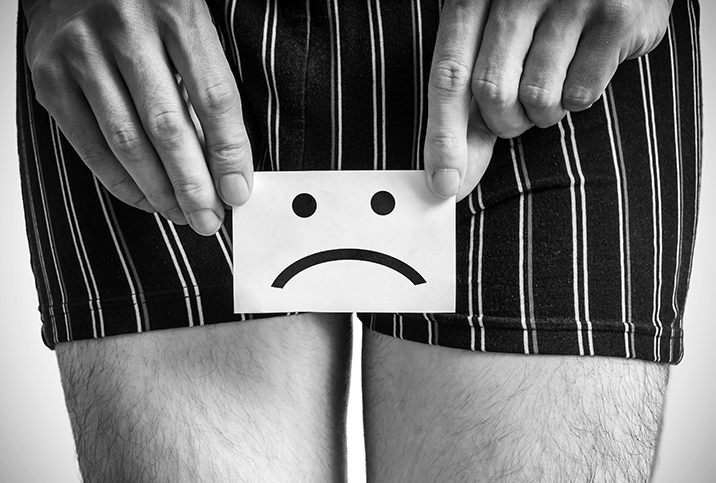Treatment Can Cure the Curve of Peyronie's Disease

Peyronie's disease is a condition in which fibrous scar tissue develops inside the penis, causing curved and sometimes painful erections. This male condition is thought to be caused by trauma or injury to the penis, such as a blow to the groin when playing contact sports.
Peyronie's disease affects an estimated 3 to 9 percent of men worldwide and can lead to complications, including erectile dysfunction (ED) and reduced quality of life, according to a 2019 study published in Therapeutic Advances in Urology.
The following treatments for Peyronie's disease can reduce penile curvature and related pain, and successfully restore sexual function.
Medications
Xiaflex is the only medication approved by the Food and Drug Administration for the treatment of Peyronie's disease. The active ingredient in Xiaflex is collagenase clostridium histolyticum, an enzyme that breaks down fibrous scar tissue to help straighten the penis.
Xiaflex is injected directly into the penis, though your doctor may administer a local anesthetic beforehand to reduce pain. Potential side effects include continued erection problems and blisters, lumps and tenderness at the injection site. A very rare (but dangerous) side effect of Xiaflex injections is penile fracture, which is a painful injury usually caused by blunt trauma to an erect penis. Xiaflex is far less invasive than surgery but may not produce results that are as effective and long-lasting.
Penile traction therapy
Penile traction therapy involves the use of a small mechanical device that elongates the penis and corrects any curvature and deformities. The penile traction device can be worn for between 30 minutes and eight hours a day, though another 2019 study published in Therapeutic Advances in Urology suggests wearing the device for more than six hours daily may achieve optimal improvement in curvature. The study also mentions that penile traction therapy may help some men extend the length of their penises by more than 4 centimeters.
Penile traction therapy is noninvasive and may be used on its own or combined with medications and surgery to treat Peyronie's disease. A disadvantage to this therapy is that the penile traction device must be worn daily and consistently to achieve desired results, which may take at least three months or longer.
Penile implants
Penile implants are devices that are surgically implanted into the penis to help men achieve erections and may also improve curvature caused by Peyronie's disease. This treatment option is good for men with Peyronie's who are also struggling with erectile dysfunction.
The use of these devices for Peyronie's disease is generally low-risk, though potential complications include malfunction of the implants and infection. Infections tend to be more common in men with diabetes or spinal cord injuries, according to a 2012 study published in Journal of Medicine and Life.
Surgery to shorten or lengthen the sheath
In men with a large amount of scar tissue, surgery may be used to remove a portion of the scar tissue and lengthen the sheath of the penis. This treatment method is typically only performed if the doctor determines that surgery will not increase the risk of or worsen ED.
Surgery may also be performed to shorten the unaffected side of the penis in men with less severe curvature. This procedure is called the Nesbit plication, and involves removing excess tissue from the longer side of the penis so it can be shortened and straightened.
Bleeding and infection are common risks associated with any type of surgery performed on the penis. Downtime from these surgeries usually lasts a few days, while recovery usually takes between four and eight weeks. Your doctor may advise against engaging in sexual activity for eight weeks.
Verapamil
Verapamil is a calcium-channel blocker medication typically used to treat high blood pressure but is sometimes used off-label to treat Peyronie's disease. When given in 12 injections over six months, verapamil can decrease the volume of plaque in Peyronie's disease, improve penile curvature and reduce pain.
Verapamil is typically a well-tolerated and minimally invasive treatment option for Peyronie's, though common adverse reactions including swelling, pain and bruising at the injection site on the penis.
Less common treatments include vacuum erection devices, corticosteroids, platelet-rich plasma, hyaluronic acid, stem cell therapy and interferon. However, evidence on the efficacy of these treatments for Peyronie's is limited.
If you have Peyronie's disease, ask your doctor about which treatment option is ideal for you based on the severity of your condition.


















